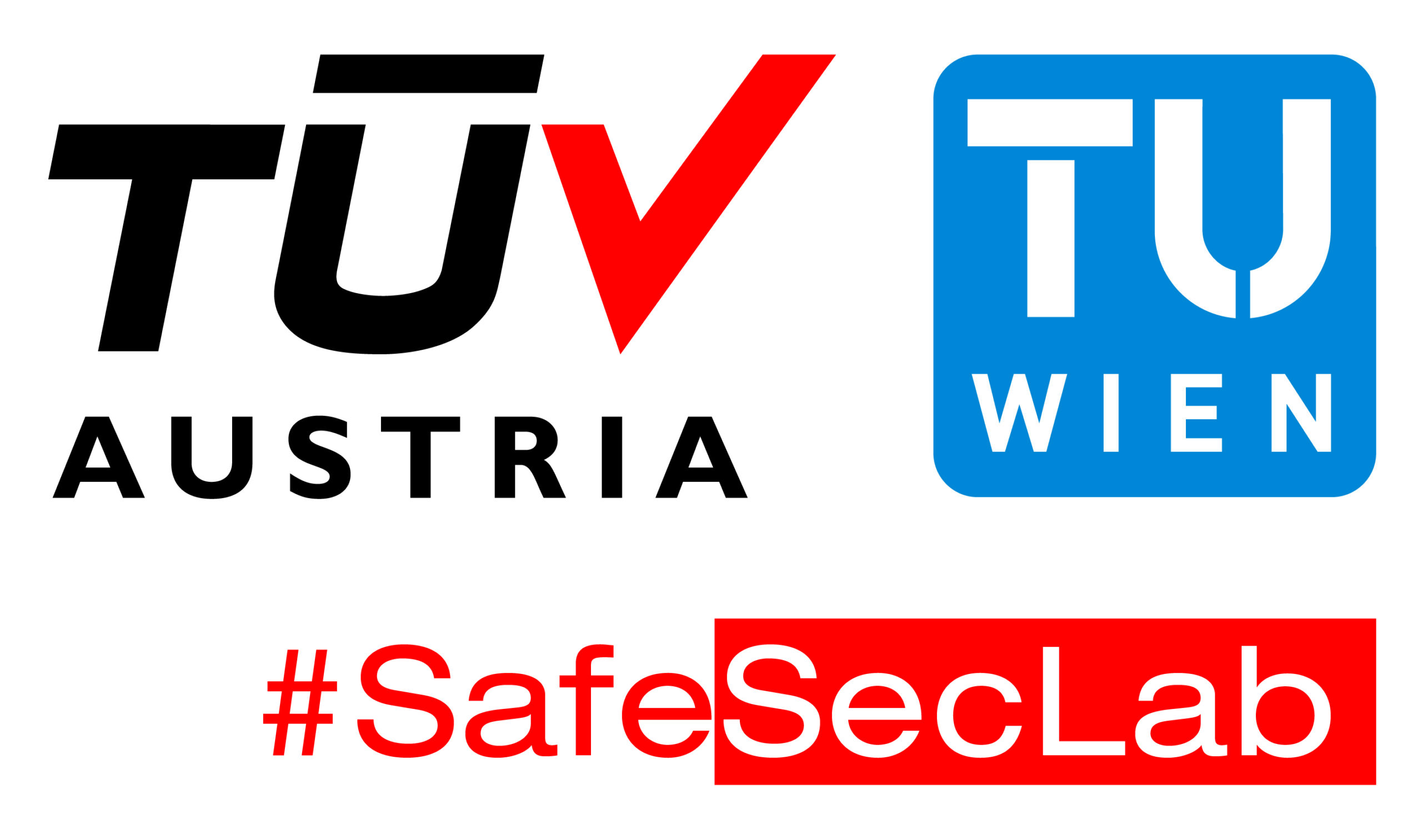TÜV AUSTRIA #SafeSecLab
 down
down
News
Latest News:
2023-07-25 The paper „Integrated Safety-Security Risk Assessment for Industrial Control System: An Ontology based Approach“, by Pushparaj Bhosale, Wolfgang Kastner and Thilo Sauter was accepted at the 28th International conference on Emerging Technologies and Factory Automation (ETFA 2023), Sinaia, Romania
TÜV AUSTRIA #SafeSecLab
Networked industrial manufacturing facilities require suitable system architectures that take into account both safety (the operation of the system must not harm humans) and security (protection against unauthorized manipulation). As part of the “TÜV AUSTRIA Research Lab for Safety and Security in Industry (#SafeSecLab)”, research questions on this topic are investigated within the framework of 9 dissertation projects at TU Wien. Through the support of experts from TÜV AUSTRIA and the involvement of stakeholders from industry, research results are transferred into industrial practice.
"THE Austrian initiative for industrial "Safety & Security"
Research Lab for Safety & Security in Industry
Aim and Content
Industrial automation, discrete manufacturing and process engineering are facing the digital transformation. Next to economic challenges, increased interconnection with components and systems from the Industrial Internet of Things (IIoT) demands for thorough protection schemes. Operational Technology (OT) is highly susceptible to intentional (hacking) but also has to withstand unintentional compromises. This fact is exacerbated by the necessary links between Information Technology (IT) and OT in order to make industrial processes more efficient and consistent. Security breaches can therefore have a direct negative impact on the safety and, as a result, the personal safety of employees. Grounded IT security measures developed can only be partially used and adapted for OT. Industry urgently needs new methods, procedures and tools in order to be able to react to this. So as to develop appropriate solutions here, TÜV AUSTRIA and the TU Wien have launched a 5-year doctoral college, the TÜV AUSTRIA Research Lab for Security in Industry, or #SafeSecLab for short. Within the project 9 content-related PhDs work with shared supervision from TU Wien and TÜV AUSTRIA experts.
Novelty
For industrial applications, integrated security & safety tools are researched, prototypically developed and evaluated based on industrial use cases. The developed tools are envisioned for entire life cycle support: design – operations – reconfiguration. Particular attention will be paid to modelling and simulation using digital twins. Furthermore, #SafeSecLab will develop new methods for SIEM (Security Information and Event Management), integrated threat modeling (threat modeling for vulnerability analysis), architecture modeling, suitable for an integrated safety & security view, (semi-automatic) test and verification.
The Project & Single Projects#SafeSecLab
A Joint Venture of TÜV AUSTRIA and TU Wien
Technology for people
Under the motto "Technology for People", the TU Wien has been researching, teaching and learning for more than 200 years. The TU Wien has developed into an open university where discussions take place, opinions are expressed and arguments are heard. Although each and every one of them has individual life concepts and worldviews, the people who work at the TU Vienna, lead them and study here, advocate cosmopolitanism and tolerance.
The innovation activities of TÜV AUSTRIA focus on the merging of the physical with the cyber world brought about by digitization, which leads to new requirements and stronger convergence of safety-related concepts and evaluations in functional safety and IT security. The increasing integration of data analytics and artificial intelligence in IoT and IIoT components also calls for new testing and certification processes in order to be able to guarantee the comprehensive security of cyber-physical systems.
